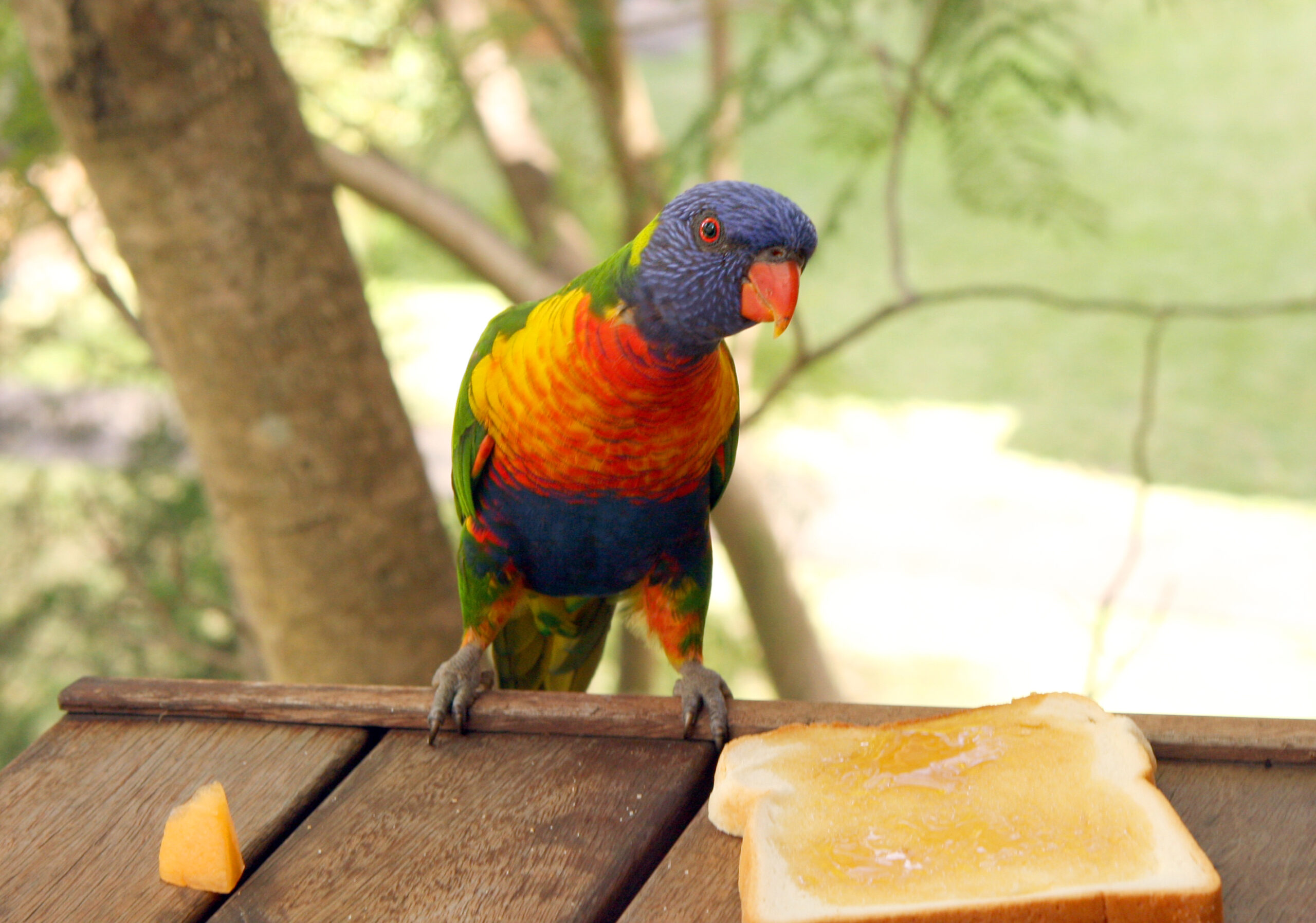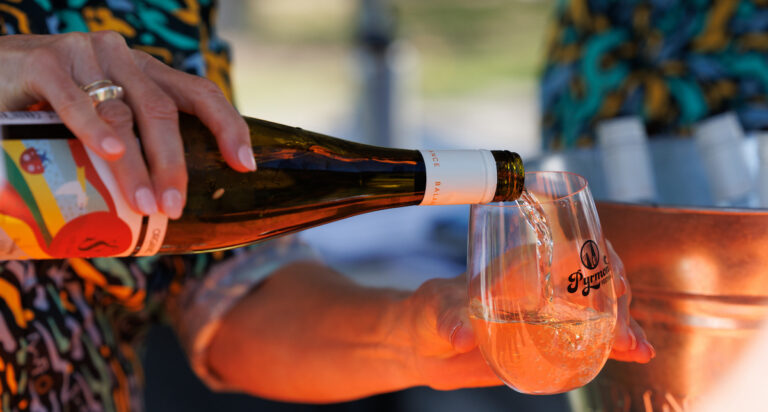
Birds’ eye view

BY ALEC SMART
This is National Bird Week and to coincide with avian awareness the annual Aussie Backyard Bird Count is underway until Sunday 29 October.
The aim of the count is to promote awareness of our feathered neighbours, as well as encourage a citizen-scientist method of recording bird numbers.
The 2016 bird count involved 61,418 participants, who observed 1,403,788 birds from 576 different species across Australia.
Established in 2014 by non-profit bird conservation organization BirdLife Australia, last year’s count remained unchanged for the third year running, with the rainbow lorikeet claiming the top spot as the most populous bird.
“The most commonly seen bird in NSW is the same as the one seen nationally,” Sean Dooley, spokesperson for BirdLife Australia, told City Hub. “In NSW, there were 73,000 rainbow lorrikeets recorded, almost twice as many as the next most common bird.”
The vibrantly-coloured and sociable parrot was followed by the noisy miner, Australian magpie, sulphur-crested cockatoo, galah, red wattlebird, house sparrow, common myna, silver gull and welcome swallow.
Interesting to discover that, despite its ubiquitous presence in our cities, pigeons – often disparagingly called ‘rats with wings’ due to their commonality and ability to thrive on human leftovers – didn’t make the top ten.
Nor did the white ibis – more comically known as the ‘bin chicken’ due to its propensity for foraging through garbage skips.
Although many bird species are in decline across Australia, thanks to predation by cats, foxes and other carnivores introduced by humans, and competition from invasive species like the Indian myna, the Backyard Bird Count doesn’t reveal significant reductions.
BirdLife Australia spokesperson Sean Dooley reveals why this is difficult to determine.
“We only have three years of data. In terms of being able to definitively say what the trends are, we have to be careful.
“However, one thing we are suspicious about: in some cities of the world, sparrows are decreasing. It certainly seems that there is a drop-off in numbers of sparrows here. It was most noticeable in the bird counts that sparrows decreased in NSW.
“Some people don’t care about sparrows, because they seem to be everywhere, and they’re introduced birds, but the decline in a bird like the sparrow can tell us a lot about what’s going on in an environment. If sparrows are disappearing from our cities and suburbs, we need to start thinking about why.”
When introducing backyard feeders to encourage birds, advisers suggest that larger species don’t need help, as it’s the smaller ones, like sparrows, that face the biggest threats, such as habitat loss and cats.
“Most of the birds in the top ten count are the larger, more aggressive birds,” says Dooley. “The rainbow lorikeet is quite pugnacious and in some areas they’ll out-muscle the very dominant Indian mynas. Another bird in the top ten is the noisy miner, a native honeyeater that’s an ultra-aggressive species that drives out small birds. The sulphur-crested cockatoo, the magpie and red wattle birds are also in the top ten and they’re all tough, aggressive species that are doing well. But the smaller birds like the wrens, robins and smaller honeyeaters – the indicators are that they’re disappearing.”
Ultimately, the biggest threat to all species of birds, particularly the smaller ones that nest and hide in ground-level bushes, are cats: domestic, stray and feral. Feral cats, a top predator and one of the most invasive species in Australia, have been linked to the decline of various native fauna including ground-nesting birds and small native mammals, and are believed responsible for the extinction of around 20 Australian species.
Feral cats cover 99.8% of Australia at a density of one cat for every four square kilometres, according to research published in the Journal of Biological Conservation in January this year, which compiled data from almost 100 surveys completed by 40 environmental scientists from different institutions.
In 2015, former Environment Minister Greg Hunt announced plans to kill 2 million feral cats, which, predictably, ignited the fury of vegetarian pop singer Morrissey and former actress and animal rights’ campaigner Bridget Bardot.
The Department of Environment and Energy’s Threat Abatement Plan for Predation by Feral Cats (2015) reveals methods they employ to reduce the feral cat population.
“Control of feral cats is challenging as they are found in very low densities over large home ranges and are shy, making them difficult to locate.
Many native animals are struggling to survive, so reducing the number killed by this introduced predator will allow their populations to grow.
Poison baits intended for feral cats must be laid on the ground (as cats, unlike other feral species such as foxes, will not dig up a buried bait).
In the northern and eastern states of Australia, poison baits lying on the ground can present a significant hazard to wildlife species. The Department of the Environment has developed a new bait for feral cats called Curiosity® that is designed to minimise or remove this hazard.”
This month, the ABC revealed that cats kill more than a million birds across Australia every day.
“To provide a first national assessment of the toll taken by cats on Australian birds, we have compiled almost 100 studies detailing the diets of Australia’s feral cats. By combining data on the cat population, hunting rates and spatial distribution, we calculate that they kill 377 million birds a year.
“In a related study, we also compiled records of the bird species being killed by cats in Australia. We found records of cats killing more than 330 native bird species — about half of all Australia’s resident bird species.
“Our results also show that cats are known to kill 71 of Australia’s 117 threatened bird species.
“Birds that feed or nest on the ground, live on islands, and are medium-sized (60-300g) are most likely to be killed by cats.“
Despite the threat from cats – both feral and domestic – BirdLife Australia’s Sean Dooley believes we can help increase small bird numbers.
“There are two things the average household can do to help smaller birds. One is to make your garden more small-bird-friendly, mainly by planting shrubs and ground cover. The aggressive birds, like the noisy miner, don’t like them much as its not favourable habitat to them.
“A lot of the smaller birds eat insects, so it provides more food for them, but it also, most importantly, provides more shelter for them to nest unhindered, but also to retreat when the larger aggressive birds, like ravens, currawongs and noisy miners, come into your garden.
“The other thing is to keep cats indoors. That is clearly of benefit to all native species.”
The Aussie Backyard Bird Count continues until Sunday October 29, accessible by a smartphone app or online, with a field guide built into the app and on the website to help you identify birds. Visit https://aussiebirdcount.org.au to register.
Sydney Park, St Peters, is hosting bird-watching events this weekend, including Urban nature and birdlife photography on Saturday – bookings: whatson.cityofsydney.nsw.gov.au/events/urban-nature-and-birdlife-photography
And Kids go birding on Sunday – bookings: eventbrite.com.au/e/kids-go-birding-tour









